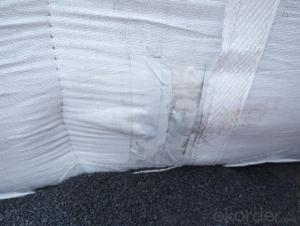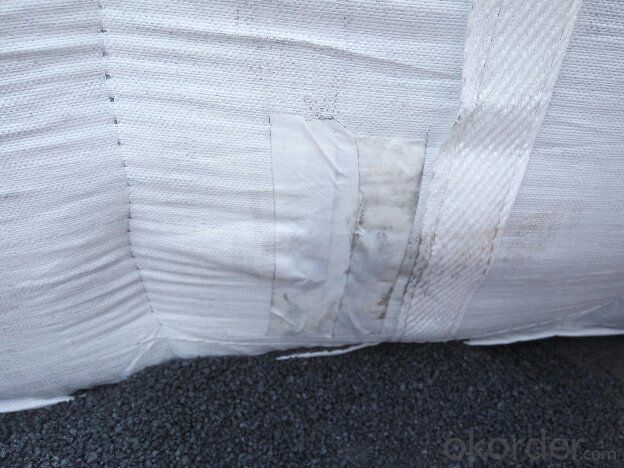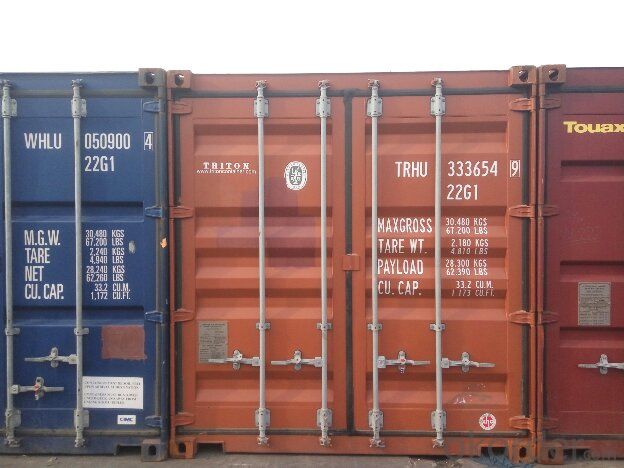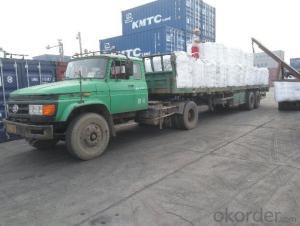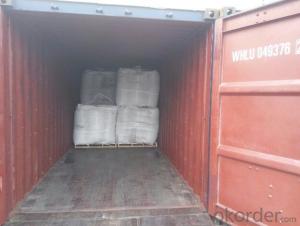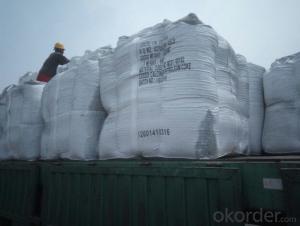Foundry Coke for Foundry Plant with Moisture 0.5%
- Loading Port:
- Shanghai
- Payment Terms:
- TT OR LC
- Min Order Qty:
- 20.5
- Supply Capability:
- 1005 m.t./month
OKorder Service Pledge
OKorder Financial Service
You Might Also Like
Brief Introduction
Foundry Coke is the main fuel of melting iron in the oven. It can melt the materials in the over, make the iron reach great heat, and keep good air permeability by sustain stock column. Thus, the foundry coke should have the characteristics of big block, low reactivity, small porocity, enough anti-crush strengh, low ash and low sulphur.
The coke handled by our cooperation is made from superior coking coal of Shanxi province. Provided with the advantages of low ash, low sulphur and high carbon. Our coke is well sold in European, American, Japanese and South-east Asian markets. Our owned Coke plant are located in Shanxi Province and supplying of you many kinds of coke.
we supply Foundry Coke long-term, its characteristic is best strength, low sulfur and phosphorus,thermal stability.
Specifications:
ASH % | 8% max | 10% max | 12% max |
V.M.% MAX | 1.5% max | 1.5% max | 2% max |
SULFUR % | 0.65% max | 0.65% max | 0.7% max |
MOISTURE | 5% max | 5% max | 5% max |
Size | 80mm-120mm,80-150,100-150mm, or as request | ||
Features
1. Our quality is always quite good and stable which is producing and packing according to customers' requirements.
2. Putting Client profile into first, achieved mutual benefit.
3. Good partner on business. It's a good and wise choice for customers' to purchase from us. It's our great honor to cooperate with you. It is more -widely used around the world
4. We can supply documents as follows:
- bill of loading,
-Invoice,
-Packing List
-Insurance
-standard inspection pictures of the container as specified by INSPECTORATE
-or more requested by buyer.
Pictures
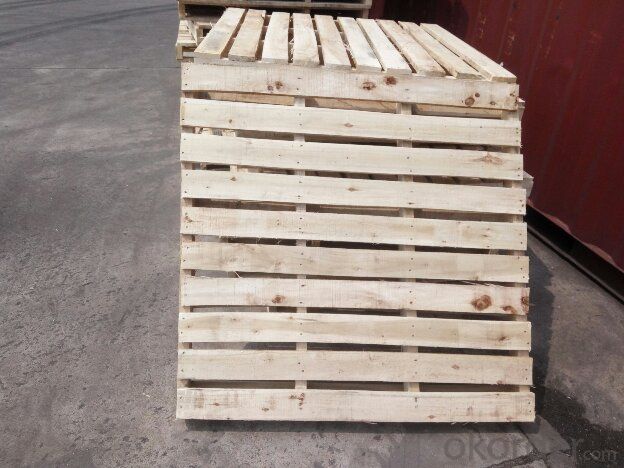
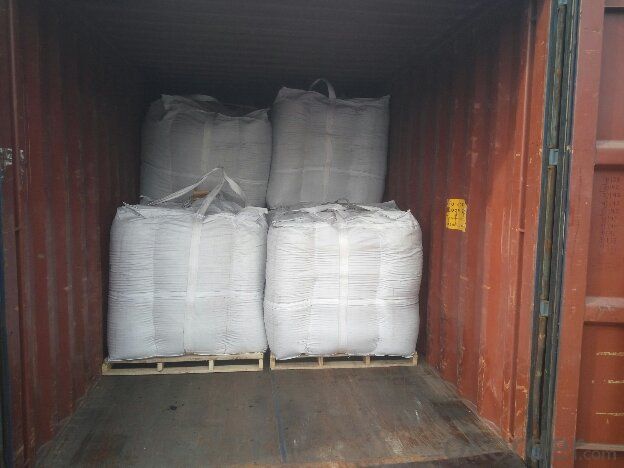
FAQ
1. What is the packing?
In 25kg bag/ In jumbo bags without pallet/ Two jumbo bags with one pallet/ or as customers’ request
2. What is the production capacity?
10 thousand tons per month
3 What is payment term?
Irrevocable LC at sight/ 20% down payment by T/T and 80% against BL copy byT/T/ or to be discussed
4 What is the service?
We will send sample to the third party(CIQ, CCIC, SGS,BV or to be discussed) for checking, and present the test certificate and loading repot of shipment.
- Q: What are the health effects of carbon pollution?
- The health impacts of carbon pollution, specifically carbon dioxide (CO2) emissions, are wide-ranging and affect both humans and the environment. The primary concern regarding carbon pollution is its contribution to climate change. Because CO2 is a greenhouse gas, it traps heat in the Earth's atmosphere. This leads to global warming and alters weather patterns. As a result, heatwaves, hurricanes, and other extreme weather events become more frequent and severe. These events have direct and indirect effects on health, including heat-related illnesses, injuries, displacement, and the spread of infectious diseases. Furthermore, carbon pollution is closely connected to air pollution, which has significant health consequences. Burning fossil fuels like coal and oil not only releases CO2 but also toxic air pollutants such as sulfur dioxide, nitrogen oxides, particulate matter, and volatile organic compounds. These pollutants can cause respiratory problems like asthma, bronchitis, and other chronic obstructive pulmonary diseases (COPD). They can also trigger cardiovascular issues, increasing the risk of heart attacks and strokes. The health impacts of carbon pollution are not limited to the respiratory and cardiovascular systems. Increased temperatures and changes in precipitation patterns can also affect water and food supplies. This can lead to waterborne diseases, reduced crop yields, malnutrition, and food insecurity. Moreover, carbon pollution has environmental consequences that further worsen health risks. Deforestation reduces clean air availability and the natural carbon sinks that absorb CO2. Ocean acidification damages marine ecosystems, affecting the availability of fish and other seafood, which are essential sources of nutrition for many communities. To minimize the health effects of carbon pollution, it is crucial to reduce greenhouse gas emissions. This can be achieved by transitioning to cleaner and renewable energy sources, implementing energy-efficient practices, and adopting sustainable land-use and agricultural practices. Additionally, investing in healthcare systems and public health infrastructure to address the direct and indirect health impacts of carbon pollution is essential.
- Q: How does carbon dioxide affect fuel efficiency?
- Fuel efficiency in vehicles is primarily influenced by factors such as engine efficiency, weight, aerodynamics, and driving conditions. Carbon dioxide, on the other hand, is a byproduct of burning fossil fuels, commonly used as vehicle fuel. When fossil fuels are burned, carbon dioxide is released into the atmosphere, contributing to the greenhouse effect and climate change. However, it is important to note that the increased concentration of carbon dioxide in the atmosphere does not directly impact fuel efficiency. Despite this, reducing carbon dioxide emissions remains crucial for mitigating climate change and promoting a sustainable future.
- Q: What are the consequences of increased carbon emissions on urban areas?
- Increased carbon emissions have significant consequences on urban areas. One of the most notable impacts is the exacerbation of air pollution. Carbon emissions, particularly from vehicles and industrial activities, contribute to the release of harmful pollutants such as nitrogen oxides and particulate matter. These pollutants can lead to respiratory problems, exacerbate existing health conditions, and increase the risk of lung cancer and cardiovascular diseases among urban residents. Furthermore, increased carbon emissions contribute to the phenomenon of urban heat islands. Carbon dioxide and other greenhouse gases trap heat in the atmosphere, leading to rising temperatures in urban areas. This effect is particularly pronounced due to the abundance of concrete and asphalt surfaces that absorb and radiate heat. As a result, urban areas experience higher temperatures than surrounding rural areas, exacerbating the discomfort and health risks associated with heat stress, especially for vulnerable populations such as the elderly and those with limited access to cooling resources. The consequences of increased carbon emissions on urban areas also extend to the natural environment. Urban green spaces and ecosystems are negatively impacted as higher levels of carbon dioxide can disrupt plant growth and reduce biodiversity. This further exacerbates the loss of natural habitats and the degradation of urban ecosystems, leading to a decrease in the provision of ecosystem services such as air purification, temperature regulation, and stormwater management. In addition to the environmental and health impacts, increased carbon emissions also have economic consequences for urban areas. The cost of mitigating and adapting to climate change-induced challenges, such as flooding and extreme weather events, increases as carbon emissions rise. This puts a strain on local governments' budgets and can lead to higher taxes or reduced funding for other essential services. To address these consequences, it is crucial for urban areas to implement strategies that reduce carbon emissions and promote sustainability. This includes investing in public transportation, encouraging the use of renewable energy sources, promoting energy-efficient buildings, and implementing policies to reduce vehicle emissions. By taking these measures, urban areas can mitigate the negative consequences of increased carbon emissions and create healthier, more sustainable environments for their residents.
- Q: How about Zonta carbon technology
- The factory garbage to death, wages do not rise, but down, quarterly awards fell by more than half, production targets set very high, employees can not reach the goal, not to work overtime. This is a company's way of restricting employees to work overtime. And so on, the target production has been added, so never meet the requirements, overtime do not think. A large piece of employee turnover now
- Q: How does carbon occur in nature?
- Various forms of carbon occur naturally in nature and it is one of the most abundant elements on Earth. It can be found in the atmosphere, the Earth's crust, and living organisms. In the atmosphere, carbon primarily exists as carbon dioxide (CO2), which is produced through natural processes like respiration, volcanic activity, and the decay of organic matter. Plants absorb this CO2 during photosynthesis to generate energy and release oxygen. Carbon is also present in other greenhouse gases like methane (CH4), which is produced by natural processes such as the decomposition of organic matter in wetlands and the digestive processes of certain animals. In the Earth's crust, carbon is present in various minerals like limestone, dolomite, and graphite. These minerals form over millions of years through the accumulation of marine organisms, such as shells and skeletons. Carbon is also a vital component of fossil fuels like coal, oil, and natural gas, which are formed from the remains of ancient plants and animals subjected to high pressure and temperature over time. Additionally, carbon is an essential element for all living organisms and serves as the foundation of organic chemistry. It is the primary component of organic matter, including carbohydrates, proteins, lipids, and nucleic acids, which are the building blocks of life. Through processes like photosynthesis, respiration, and decomposition, carbon cycles continuously within ecosystems. In conclusion, carbon occurs naturally in different forms in the environment and plays a critical role in the Earth's climate system, geological processes, and the sustenance of life.
- Q: How does carbon affect the formation of haze?
- Haze formation is significantly influenced by carbon, as it has the ability to interact with other pollutants and atmospheric conditions. When carbon-containing compounds, such as emissions from fossil fuels or organic matter from wildfires, are released into the atmosphere, they undergo chemical reactions with gases like nitrogen oxides and volatile organic compounds. These reactions lead to the creation of tiny particles called secondary organic aerosols (SOAs), which are suspended in the air. The presence of these SOAs can contribute to the formation of haze by scattering and absorbing sunlight, resulting in reduced visibility and a hazy appearance. Additionally, the carbon particles act as nuclei for condensation, attracting other pollutants and water vapor, ultimately leading to the formation of larger particles and, consequently, haze. Moreover, the interaction between carbon and atmospheric moisture can result in the formation of secondary organic aerosol particles, further contributing to haze formation. Furthermore, carbon particles also play a role in the formation of photochemical smog, a specific type of haze characterized by high levels of ozone. Carbon-containing pollutants can react with sunlight and other pollutants, leading to the production of ozone. The presence of ozone, combined with other pollutants, contributes to the formation of haze and decreases air quality. To summarize, the impact of carbon on haze formation is significant, as it contributes to the creation of secondary organic aerosols, acts as condensation nuclei, and promotes the production of ozone. Understanding the role of carbon in haze formation is crucial for implementing effective measures to control air pollution and mitigate the adverse effects of haze on human health and the environment.
- Q: What are the advantages of carbon nanotube transistors?
- Traditional silicon-based transistors are outshined by carbon nanotube transistors for several reasons. Firstly, carbon nanotubes boast exceptional electrical properties with their high electron mobility, enabling swift and effortless electron movement. This results in faster switching speeds and higher operating frequencies, making them a perfect fit for high-performance applications like computers and communication devices. Secondly, carbon nanotubes possess an incredibly small size, measuring a mere few nanometers in diameter. This miniature scale allows for the creation of highly compact and densely packed electronic circuits, leading to elevated integration levels and enhanced device functionality. In comparison, silicon transistors pale in comparison as they have feature sizes several orders of magnitude larger. Moreover, carbon nanotubes exhibit superior heat resistance and thermal conductivity compared to silicon. This exceptional trait enables them to withstand higher temperatures without degradation, resulting in more efficient operation and a reduced need for elaborate cooling systems. Additionally, their ability to endure harsh environments makes them highly suitable for aerospace, automotive, and defense applications. Furthermore, carbon nanotubes are remarkably robust and flexible. They can be bent and stretched without breaking, making them ideal for use in flexible electronics and wearable devices. Their mechanical strength ensures long-term stability and reliability, ultimately leading to improved device performance and longevity. Lastly, carbon nanotube transistors can be fabricated using existing manufacturing processes, making them compatible with current semiconductor technologies. This compatibility allows for their seamless integration into existing electronic systems without the need for significant modifications, thereby reducing both cost and implementation time. All in all, the myriad advantages of carbon nanotube transistors, including their exceptional electrical performance, small size, thermal stability, mechanical strength, and compatibility with existing manufacturing processes, position them as a promising alternative to traditional silicon transistors for future electronic applications.
- Q: What are the consequences of increased carbon emissions on global food security?
- Increased carbon emissions have significant consequences on global food security. One of the most immediate impacts is the alteration of weather patterns and increased frequency of extreme weather events such as droughts, floods, and heatwaves. These events can lead to crop failures, reduced agricultural productivity, and loss of livestock, ultimately resulting in food shortages and price volatility. Carbon emissions also contribute to climate change, leading to long-term shifts in temperature and precipitation patterns. Higher temperatures can accelerate the growth and reproduction rates of pests and diseases, which can devastate crops and livestock. Additionally, changes in rainfall patterns can disrupt the timing and quantity of water available for irrigation, further reducing agricultural productivity. Furthermore, carbon emissions contribute to the acidification of oceans, which negatively affects marine ecosystems and the livelihoods of communities dependent on fishing and aquaculture. This can lead to a decline in fish stocks, threatening the availability of a vital source of protein and nutrition for millions of people. Another consequence of increased carbon emissions is the loss of biodiversity. Climate change can disrupt ecosystems, leading to the extinction or migration of plant and animal species. This loss of biodiversity reduces the resilience and adaptability of agricultural systems, making them more vulnerable to pests, diseases, and environmental stresses. Ultimately, the consequences of increased carbon emissions on global food security are far-reaching and complex. They include decreased agricultural productivity, increased food prices, food shortages, and reduced access to nutritious food. Addressing carbon emissions and mitigating climate change is crucial to ensure a sustainable and secure global food system for future generations.
- Q: How does carbon affect the formation of hurricanes?
- Carbon does not directly affect the formation of hurricanes. The formation of hurricanes is primarily driven by warm ocean temperatures, high humidity, and the Coriolis effect. However, carbon emissions and the subsequent increase in greenhouse gases have been linked to climate change, which indirectly impacts hurricane formation and intensity. Climate change, caused by the accumulation of carbon dioxide and other greenhouse gases in the atmosphere, is leading to rising global temperatures. Warmer ocean temperatures provide more energy to hurricanes, making them potentially more intense and destructive. Additionally, climate change can alter wind patterns and atmospheric circulation, which can influence the development and movement of hurricanes. Moreover, as carbon dioxide dissolves into seawater, it can lead to ocean acidification, which can harm marine life and disrupt the delicate balance of ecosystems. This disruption can have indirect effects on hurricane formation, as healthy ecosystems play a crucial role in regulating the climate and maintaining a stable environment. While carbon emissions themselves do not directly impact the formation of hurricanes, their contribution to climate change and subsequent effects on the Earth's systems can have significant consequences for the frequency, intensity, and behavior of hurricanes. It is important to reduce carbon emissions and mitigate climate change to lessen the future impacts of hurricanes and protect vulnerable coastal regions.
- Q: What is the role of carbon in organic chemistry?
- Carbon is a fundamental element in organic chemistry, playing a crucial role in the structure and function of organic compounds. It is unique in its ability to form stable covalent bonds with other carbon atoms and a wide variety of other elements, leading to the vast diversity of organic molecules found in nature. Carbon's ability to bond with itself and other elements allows for the formation of long chains, branched structures, and ring systems, giving rise to the complex structures and shapes characteristic of organic compounds. In organic chemistry, carbon serves as the backbone for many important biomolecules such as carbohydrates, lipids, proteins, and nucleic acids that are essential for life. It is the basis for the structural diversity and complexity found in living organisms. Carbon's ability to form multiple bonds and its tetrahedral geometry also contribute to the versatility of organic compounds, allowing for the presence of various functional groups such as hydroxyl, carbonyl, amino, and carboxyl groups. Furthermore, carbon's ability to undergo chemical reactions, including oxidation, reduction, addition, substitution, and elimination reactions, is vital in organic chemistry. These reactions are fundamental for the synthesis and modification of organic compounds, enabling the creation of new molecules with specific properties and functions. Carbon's role as a central element in organic chemistry also extends to the study of reaction mechanisms, stereochemistry, and the understanding of the behavior and reactivity of organic compounds. Overall, carbon's unique properties and its ability to form stable covalent bonds with other elements make it the foundation of organic chemistry. Its presence allows for the diverse array of organic compounds that exist, and its participation in chemical reactions enables the synthesis and manipulation of these compounds. Without carbon, the field of organic chemistry and the study of life's building blocks would not be possible.
Send your message to us
Foundry Coke for Foundry Plant with Moisture 0.5%
- Loading Port:
- Shanghai
- Payment Terms:
- TT OR LC
- Min Order Qty:
- 20.5
- Supply Capability:
- 1005 m.t./month
OKorder Service Pledge
OKorder Financial Service
Similar products
Hot products
Hot Searches
Related keywords
